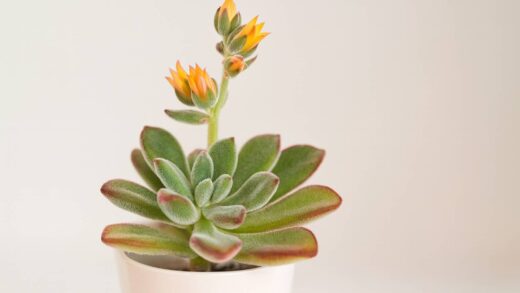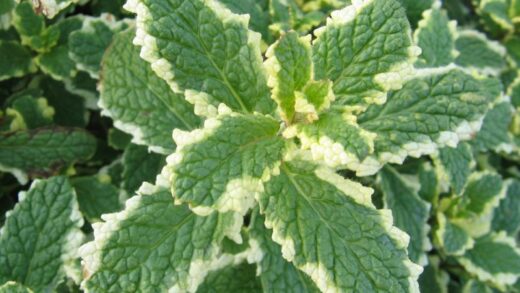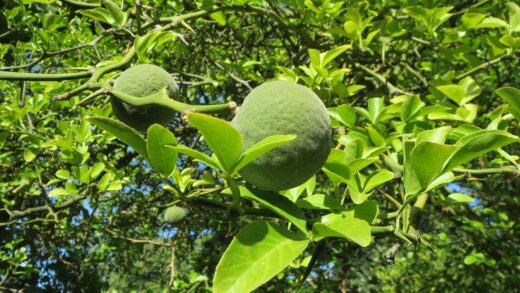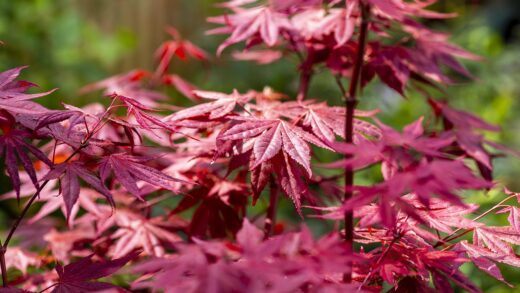Globe amaranth is a modest feeder, a characteristic that makes its cultivation relatively simple and cost-effective. Unlike many other annuals that require regular applications of fertilizer to produce a continuous display of flowers, this plant thrives in average soil and can even perform poorly if over-fertilized. Understanding its minimal nutrient requirements is key to achieving a healthy balance between lush foliage and prolific, vibrant blooms. The primary goal of any fertilization strategy for globe amaranth should be to supplement the soil’s natural fertility only when necessary, rather than to provide a constant stream of nutrients. This less-is-more approach ensures strong, resilient plants that flower abundantly throughout the season.
At its core, globe amaranth prefers a soil environment that is not overly enriched. It has adapted to grow in conditions where nutrients are not always plentiful, and as a result, it has become very efficient at utilizing the resources available in average garden soil. In many cases, if your garden soil is reasonably healthy and has been amended with compost in the past, you may not need to provide any additional fertilizer at all for the entire growing season. The plant will draw what it needs from the existing soil, producing sturdy stems and a wealth of its signature clover-like flowers.
The most common mistake gardeners make is providing too much nitrogen. An excess of nitrogen will stimulate rapid, lush, green leafy growth, but this comes at the direct expense of flower production. The plant will look healthy and green, but you will be left wondering why it is not producing the abundance of blooms you expected. This is why high-nitrogen, all-purpose fertilizers are often a poor choice for globe amaranth. A balanced approach, or one that slightly favors phosphorus and potassium, is far more beneficial for promoting a strong root system and abundant flowering.
Therefore, any fertilization should be done with a light hand. The ideal time to provide nutrients is at the time of planting or shortly thereafter. This single application is often sufficient to support the plant through its entire life cycle. By focusing on creating a healthy soil structure through the use of organic matter and only using fertilizer sparingly and strategically, you provide the perfect foundation for globe amaranth to perform at its best, rewarding you with a durable and colorful display that requires very little ongoing intervention.
Preparing the soil before planting
The most effective way to meet the nutrient needs of globe amaranth is to focus on the soil before the plants even go in the ground. Good soil preparation can often eliminate the need for any supplemental chemical fertilizers later in the season. The primary goal is to create a well-drained, moderately fertile environment that will support healthy root development. Begin by working the soil in your chosen planting location to a depth of at least eight to twelve inches. This process of loosening the soil helps to improve aeration and allows the roots to penetrate more easily.
More articles on this topic
Incorporating organic matter is the single most beneficial amendment you can make. Adding a two- to three-inch layer of well-rotted compost or aged manure and mixing it thoroughly into the soil provides a host of benefits. Organic matter improves soil structure, enhances drainage in heavy soils, and increases water retention in sandy soils. Furthermore, it acts as a slow-release source of a wide range of essential nutrients and micronutrients, feeding the plants gently and consistently over a long period. This single application of compost at the beginning of the season is often the only “fertilizer” globe amaranth will need.
While preparing the soil, you may also consider adding a small amount of a balanced, slow-release granular fertilizer, particularly if your soil is known to be very poor or depleted of nutrients. Choose a fertilizer where the three numbers on the label (N-P-K) are relatively even, such as a 10-10-10 formula, or one that is slightly lower in nitrogen. A light sprinkling, following the package directions for new plantings, is all that is required. This should be mixed into the soil along with the compost so that the nutrients are distributed evenly throughout the root zone.
It is generally not necessary to perform extensive soil pH adjustments for globe amaranth, as it is adaptable to a wide range. However, if you know your soil is extremely acidic or alkaline, you may want to amend it to bring it closer to a neutral range of 6.0 to 7.0. Lime can be added to raise the pH of acidic soil, while sulfur can be used to lower the pH of alkaline soil. For most gardeners, though, focusing on improving the soil’s structure and organic content will have a much greater impact on the plant’s performance than chasing a perfect pH number.
Fertilizing during the growing season
For globe amaranth planted in well-prepared, compost-amended soil, supplemental fertilization during the growing season is rarely necessary. The slow and steady release of nutrients from the organic matter in the soil is typically sufficient to sustain the plant’s growth and flowering throughout the summer and into the autumn. Constantly adding more fertilizer can do more harm than good, leading to weak, leggy growth and a noticeable reduction in the number of blooms. It is always best to observe the plant’s performance before deciding to apply additional nutrients.
More articles on this topic
If your plants are looking pale or failing to thrive, and you have ruled out other issues such as improper watering or insufficient sunlight, a light feeding might be beneficial. This is more likely to be necessary in situations where the soil is exceptionally sandy and nutrients leach out quickly, or if the plants are being grown in containers. If you do decide to fertilize, opt for a liquid fertilizer that is formulated for blooming plants, which will typically have a lower nitrogen content and higher levels of phosphorus and potassium.
When applying a liquid fertilizer, it is crucial to dilute it to half the strength recommended on the package instructions. This weaker solution provides a gentle boost of nutrients without overwhelming the plant. This light feeding should only be done once a month at most. Over-application of even a bloom-boosting fertilizer can still lead to problems, so a conservative approach is always the best course of action. Water the plants thoroughly before applying the fertilizer solution to prevent it from burning the roots.
An alternative to liquid fertilizers is to simply top-dress the soil around the base of the plants with a thin layer of fresh compost mid-season. This method, often called “side-dressing,” provides a gentle, slow-release source of nutrients that mimics natural processes. Simply scratch the compost lightly into the soil surface and water it in. This is a safe and effective way to give your plants a mid-summer pick-me-up without the risk of over-fertilizing that comes with concentrated chemical products.
Nutrient needs for container-grown plants
Globe amaranth grown in pots and containers has slightly different nutrient requirements compared to its garden-grown counterparts. The potting mix in a container has a limited volume and can become depleted of nutrients more quickly, especially with the frequent watering that containers require. Water running through the pot can leach out essential nutrients over time, making some form of supplemental feeding necessary to maintain vigor and continuous blooming throughout the season.
The ideal approach for container-grown plants begins with using a high-quality potting mix that contains a slow-release fertilizer. Many commercial potting soils are formulated this way, providing a base level of nutrients that will last for the first couple of months. This initial charge of fertilizer gives the plant a strong start and supports its early growth without requiring any immediate action from the gardener. When choosing a potting mix, look for one that is well-draining, as this is just as important as its nutrient content.
After the initial slow-release fertilizer in the potting mix has been depleted, typically after about eight to ten weeks, you will need to begin a regular feeding schedule. A balanced, water-soluble fertilizer formulated for flowering annuals is an excellent choice. As with in-ground plants, it is best to dilute the fertilizer to half the recommended strength to avoid burning the roots or promoting excessive leafy growth. Apply this diluted fertilizer solution every two to four weeks as part of your regular watering routine.
Pay close attention to the plant’s appearance. A healthy container-grown globe amaranth will have deep green leaves and plenty of flowers. If the leaves start to look yellowed or the flower production slows down, it is a clear sign that the plant is hungry and would benefit from a feeding. Conversely, if the plant is growing very large and leafy but has few flowers, you should reduce the frequency of your fertilization. Adjusting your feeding schedule based on the plant’s performance is the key to success with container gardening.
Recognizing nutrient deficiencies
While globe amaranth is not prone to nutrient deficiencies, especially when grown in soil amended with compost, it is still helpful to know the signs to look for. Recognizing these signals early can allow you to correct the issue before it significantly impacts the plant’s health. The most common deficiency, should one occur, is a lack of nitrogen. This typically manifests as a general yellowing, or chlorosis, of the older, lower leaves on the plant. The new growth at the top may remain green, but the overall plant may appear stunted and lack vigor.
A deficiency in phosphorus, while less common, can also occur. Phosphorus is vital for root development, energy transfer, and flowering. A plant lacking sufficient phosphorus may have stunted growth and produce foliage that is an unusually dark, dull, or purplish-green color. More noticeably, a phosphorus deficiency will result in a significant reduction in the number and size of the flowers. The plant may seem healthy otherwise, but the floral display will be sparse and disappointing.
Potassium is another essential macronutrient that plays a role in the plant’s overall health and its ability to withstand stress from drought and disease. A potassium deficiency often appears as a yellowing or browning along the edges or tips of the older leaves. The center of the leaf may remain green, creating a distinct margin of discoloration. While this is a rare occurrence in globe amaranth, it is a symptom to be aware of in the broader context of plant health.
If you suspect a nutrient deficiency, the first step is to ensure that other growing conditions are optimal, as issues like overwatering or compacted soil can mimic deficiency symptoms by preventing the roots from absorbing available nutrients. If conditions are good, a single application of a balanced, water-soluble fertilizer should be sufficient to correct the problem. In most cases, however, these symptoms will not appear if the soil was properly prepared with organic matter at the beginning of the season, reinforcing the principle that healthy soil is the foundation of healthy plants.




















